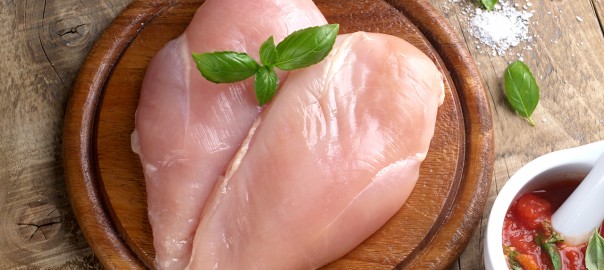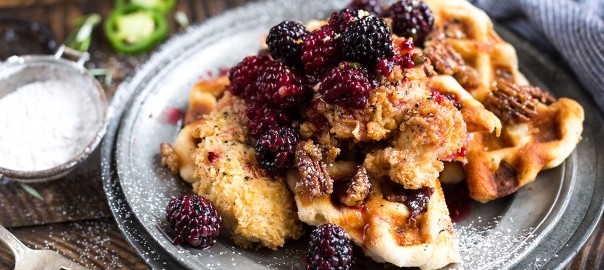When I was a senior in high school, I had some free time on my hands. At this point in my life, I didn’t love school and had no college plans, so I got a job at a restaurant near my house.
It was a tiny restaurant; it had ten tables in total, maybe. But it was famous for its schnitzel.
If you aren’t familiar with the dish, a schnitzel can be any type of meat — usually, veal, pork, or chicken — that is pounded thin with a meat tenderizer, breaded, and fried. It’s likely you’ve heard of the traditional Austrian dish Wiener Schnitzel, which is thinned and fried veal.
The restaurant I worked at during those formative years as an apprentice chef was highly-regarded for its take on chicken schnitzel.
To make the dish, we had to take chicken breasts and pound them paper thin. We then breaded the thin chicken in heavily seasoned flour, egg, and dried challah breadcrumbs. Then, we fried them golden brown in skillets of bubbling oil.
The first time I took a bite of schnitzel, my life changed forever.
Up to that point, chicken had been mundane for me; it was just another all-too-common menu item, often barbecued on the grill at home. I couldn’t believe chicken could taste so good after that first schnitzel bite.
The wizened alcoholic chef who worked in the kitchen took time to teach me the process between his regular temper tantrums and naps on the old leather couch in the basement of the restaurant. The key, he said, was pounding the chicken breast to a perfect thickness. Not falling apart, but thin enough to cook quickly before the breadcrumbs burnt. Thick enough to retain some moisture but thin enough to be cut with a fork.
To get that perfect thinness by pounding chicken took some practice; I still remember the meat mallet we used, textured on one side and smooth on the other. To get the chicken breast to the right thickness, I covered the cutting board completely with several layers of plastic wrap. Then I made a blanket of plastic wrap that would go over the chicken breast by folding the film over itself five or six times. The plastic blanket does two things: It helps keep the flying chicken pieces to a minimum, and it helps distribute the impact of the meat mallet more evenly.
Rather than tenderize and pound a whole chicken breast — which can be quite thick — I sliced it down the middle, so I had two thinner breasts. Placing one of the thinner sliced breasts on the board, I covered it with the second layer of plastic. First, I’d give it a couple good smacks with the textured side of the mallet to soften it up sufficiently. Flipping the mallet, I would then continue pounding it until I had the perfect thickness.
Pounding chicken thin is a vital process to prepare chicken for a lot of dishes that require boneless chicken breasts. If the step is skipped, it will result in uneven cooking when baking, grilling, or frying chicken. Dishes like chicken piccata, chicken marsala, schnitzel, chicken parmigiana, and chicken and waffles are just a few of the many popular chicken dishes that benefit from the pounding method to achieve a delicious texture and flavor.
Pounding a chicken breast paper thin, marinating it in an herb-and-spice-heavy marinade, and then grilling it is one of my favorite ways to grill white meat. Because of the thickness, it cooks in a minute or two; so fast that it never has time to dry out. Also, the grill and marinade make more contact with the meat because there’s so much more surface area. Pounding a chicken breast thin is a great way to cook chicken for sandwiches or to be sliced on salads, too.
Really, there are so many ways to use this method!
So get practicing and try one of our many ButcherBox chicken breast recipes. Or check out one of my recipe or how-to videos on YouTube.






